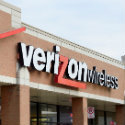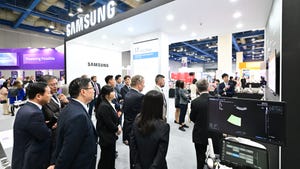Verizon's Network Strategy for the Super Bowl Includes 4G, 5G and... WiFi?
Verizon's customers at this weekend's Super Bowl will be automatically connected to the venue's WiFi network – noteworthy considering Verizon's emphasis on its 4G and 5G offerings.

Verizon customers attending the Super Bowl this weekend will have seamless access to a range of wireless networks at Hard Rock Stadium in Miami, including 4G, 5G and WiFi.
Wait, what?
Unlike AT&T and others, Verizon has long opposed widespread use of WiFi in its cellular offerings -- a position partly intended to enforce Verizon's network-focused marketing messages. "In a world of 5G millimeter wave deployments, we don't see the need for WiFi in the future because we have a more secure network environment," Verizon's Ronan Dunne said at a recent investor conference. "We have much higher performance criteria and we have the ability to handle sessions, etc., etc. So our view is that, when fully deployed, there are substantial environments in which public WiFi will be eliminated in favor of millimeter wave."
But this position isn't stopping Verizon from using WiFi today, when and where it's available. For example, at this weekend's Super Bowl in Miami, Verizon customers who have WiFi turned on in their phones will be automatically connected to the venue's WiFi network.
Verizon's quiet embrace of WiFi
"It's a fairly common implementation," said John Brams, head of sports and entertainment at Extreme Networks, the company that manages the WiFi network inside Hard Rock Stadium in Miami, where Super Bowl LIV will be held on Sunday. Extreme is the NFL's "official" WiFi solutions provider and manages WiFi networks in a number of NFL stadiums.
"This is fairly standard," agreed Verizon spokesperson Kevin King. He said Verizon has been automatically connecting its customers to WiFi in NFL venues like Hard Rock Stadium and in other locations since 2012.
King argued that Verizon isn't "offloading" its cellular traffic onto Extreme Networks' WiFi network in Miami's Hard Rock Stadium. "We're not moving people from one [network] to the other," he said. "It has nothing to do with network capacity."
Extreme's Brams agreed. "The word 'offload' insinuates one network is congested, and you're moving to another network that's not congested. And that's not how it works," he said.
Instead, according to both Brams and Verizon's King, Verizon customers who enter the stadium and have WiFi activated on their phone will be automatically authenticated onto Extreme's WiFi network. Meaning, they won't have to click any buttons to get onto the WiFi. And while this setup will clearly help reduce the amount of traffic on Verizon's aging 4G and new 5G networks in the stadium, it's also not something that Verizon has direct control over. For example, users can switch their WiFi off in order to push their phone back onto Verizon's cellular networks inside the venue.
It's also worth noting that Verizon is not using Passpoint Hotspot 2.0 technology to connect its customers to Extreme's WiFi network in Miami. Passpoint has been touted by the Wi-Fi Alliance as a way to quickly move customers onto a WiFi network without requiring them to actively sign on, and often has been positioned as an element of cellular and WiFi convergence. Brams said Extreme supports Passpoint as an authentication technology alongside several other authentication technologies, but he declined to provide details.
Extreme as an option for cellular operators
Neither Verizon nor Extreme Networks would discuss the financial details of their relationship. However, Extreme's Brams said that the company has similar agreements with other cellular operators, though he declined to name the operators or to provide details.
"It's a significant part of our business," he said of Extreme's agreements with cellular network operators to connect their customers to its WiFi networks in venues like NFL stadiums. He said the company employs a variety of different technologies and business models with its cellular operator customers. The carriers, he said, "view this as a really cost-effective, efficient way to give a really good experience to their customers" inside venues with Extreme WiFi networks.
He added that Extreme is seeing growing interest in its WiFi among cellular network operators in general, though he declined to provide specifics. "The amount of interest in using this as a technical solution … in the last year has accelerated a ton," he said.
And what of 5G? "We're excited about 5G," Brams said, adding that he doesn't see WiFi going away anytime soon.
5G, WiFi and unlicensed spectrum
It's difficult to gauge exactly how Verizon is using WiFi in its wider wireless networking strategy, given that the company won't disclose the details of its financial agreements with companies like Extreme, nor its traffic management techniques. But Verizon is not alone in looking at WiFi -- and unlicensed spectrum, in general -- as an option.
For example, T-Mobile at one point tested a service that used Passpoint to automatically connect its customers to a cable provider's public WiFi hotspots. And both Sprint and AT&T have inked formal WiFi offloading agreements with Boingo to actively move their customers off cellular networks and onto Boingo-managed WiFi networks, via Passpoint, in airports and other locations where Boingo operates WiFi networks.
Further, companies like AT&T, Comcast and SK Telecom -- under the auspices of the Wireless Broadband Alliance -- have argued for a tighter relationship between 5G and WiFi.
Moreover, the lines between cellular networks in licensed spectrum and WiFi networks in unlicensed spectrum continue to blur. Already AT&T, Verizon and T-Mobile are deploying LAA technology in locations around the country. LAA essentially pushes 4G LTE traffic into the unlicensed 5GHz band -- one of the primary locations for unlicensed WiFi networks. And Verizon specifically has been building out a 4G LTE network in the unlicensed 3.5GHz CBRS spectrum band, which was recently opened for unfettered use.
And there's a growing push within the cellular industry to develop a version of 5G that will work in unlicensed spectrum bands.
What's driving all this are the dramatic increases cellular operators are seeing in traffic across their networks. For example, Verizon presented a slide at a recent investor conference that indicated it is expecting a 36% compound annual growth rate in LTE usage on its network, according to the Wall Street analysts at Lightshed.
Thus, it's clear that operators including Verizon are increasingly embracing WiFi, unlicensed spectrum and other mechanisms to address that growth, while waiting for more licensed spectrum to be released by the FCC.
— Mike Dano, Editorial Director, 5G & Mobile Strategies, Light Reading | @mikeddano
About the Author(s)
You May Also Like












